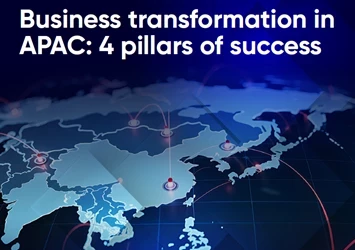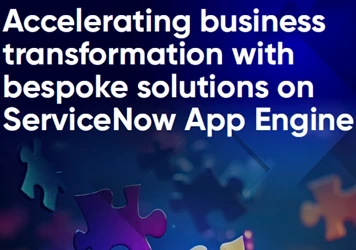OPEX in Oil and Gas Live 2020: Transforming to survive
Gain insight from some of the oil and gas industry’s leading professionals on how organizations can drive toward operational excellence in a time of crisis
Add bookmark
In what is an incredibly troubling period for the oil and gas industry, organizations are experiencing unprecedented challenges. The onset of Covid-19 coupled with plummeting oil prices has resulted in decreased revenue and higher energy demand for oil & gas organizations across the board. At OPEX in Oil and Gas Live 2020, a range of industry leaders gathered to discuss the state of the field today and offer advice and guidance for achieving operational excellence in difficult times.
Vernon Dickson, senior corporate program manager at independent oil and natural gas producer Range Resources, noted during his session at the event that “while revenue is down due to low prices, there is still the same amount of work to do.” As a result of this, organizations will be looking to reduce costs to match revenue, which may mean making cuts or, in some cases, embarking on a journey of transformation for operational excellence.
This report will discuss how oil and gas organizations can look to emulate those who are achieving success in the quest for operational excellence and will outline the key considerations that need to be taken into account. It will also look at the methods these organizations are utilizing to stay afloat in what is a critical period for the oil and gas sector, such as digital transformation and application of real-time data.
Building a transformation culture
Reduced demand for oil has forced a period of transformation onto the oil and gas sector. In order for organizations to survive, drastic changes to business models and operational strategies are necessary.
Noorddin Taj, IT strategy, architecture and digital innovation leader at British Petroleum (BP), believes that oil and gas organizations are facing more challenges than any other sector today. “The world needs more energy at a lower cost and we need to reduce emissions at the same time.”
At the live event, Deana Werkowitch, vice president, business process optimization at midstream oil and gas organization Crestwood Midstream, shared a three-part framework for fostering a transformation culture. She believes that by instilling these three principles into businesses, they can not only begin to understand what is necessary to transform, but also become prepared and motivated to begin the journey.
People
The attention and focus required for transformation start with the soft skills. It is important for employees to be considering how they can develop relationships and build trust, both internally and externally.
Werkowitch explained that is not the job of a leader to define everything. They should work with people, whether staff or customers, to help them understand what is possible and listen to their voice to recognize what needs to be done and what may have been missed.
“It is important as a leader to look at your blind spots, because those are things you may not expect to be a barrier to your transformation,” noted Werkowitch.
Process
Knowing the history and status of the processes in an organization is key as it is difficult to understand what next steps need to be taken without taking inventory and acknowledge the company’s journey first.
Werkowitch believes that getting familiarized with the employees’ own journey and their point of view on the history of an organization can help managers build trust with them, fostering in turn cooperation and co-creation for the transformation journey.
Technology
It is useful to understand what existing systems can be leveraged to facilitate the transformation journey. Opportunities might exist already to use existing technologies or integrate new ones or in order to eliminate data gaps and duplicative task functions.
Werkowitch noted that discipline is key to avoid being tempted by what she referred to as “shiny objects”, explaining that businesses need to take inventory of what they have before assuming that a new technology or tool is needed to achieve the desired functionality.
The power of data
The oil and gas industry is no stranger to huge data sets, with many organizations operating immense quantities of assets, with sensors collecting a range of metrics such as temperature or pressure. The ways in which organizations can leverage this data in a drive toward operational excellence are evolving.
Peter van den Heuvel, product manager, real-time data at Shell, provided attendees with a closer look into the methods applied at the oil and gas giant to leverage their data through infrastructure tools to facilitate operational excellence.
Data quality
Having accurate data is essential to enable organizations to make informed and timely decisions. This need is particularly pronounced in the oil and gas sector, as the wrong decisions can have a calamitous impact on a global scale.
Van den Heuvel stressed the importance of establishing a solid data infrastructure through tools and technologies such as PI System, Seeq or Google BigQuery. Such tools can bring data streams together into one place, such as with a PI ‘super collective’, and ensure that data quality is visible to those attempting intelligent analysis.
Integrate in a meaningful way
The data infrastructure tools mentioned above offer simplified methods for integrating data through visualization and self-service analytics features among others.
When an organization is able to visualize the data it has acquired, it becomes much easier to understand it. For example, by combining geologic, seismic and reservoir data, a drilling engineer can safely plan a well path and avoid any geological features that may jeopardize the operation.
Van den Heuvel described web-based visualization tool PI Vision that Shell utilizes, which can be accessed anywhere on a range of devices to provide a visualization of relevant data. This removes the need for client-based applications and makes visualization a much faster and easier process.
Self-service analytics tools are a valuable option for integrating data, as they enable all users to perform analysis and create reports without assistance. This removes the need for data scientists to identify relationships in data sets, as the staff can draw meaningful insights. and uncover relationships across the organization, allowing them to delve into the ‘why’ and make data-backed decisions.
Make timely decisions
Tools available today make it possible to set alerts for significant events, such as a drastic temperature or pressure rise, through features such as PI System’s ‘Event Frames’.
Van den Heuvel explains that if integrated and connected with tools like a proactive technical monitoring hub and fed with data from across the organization, such a feature would allow speedy decisions backed by a wealth of relevant data.
Digital transformation
Digital transformation has become a buzzword across many industries and this is particularly true in the oil and gas sector, which is surprising, as traditionally innovation has taken second place behind long-established best practice in the oil and gas sector. However today, the pressures of Covid-19 and low oil prices have made digital transformation and innovation a necessity. “Now we have government pressures, new regulations coming in and increasing customer demands, and if organizations do not innovate and cater to these requirements rapidly, then they are not going to survive” explained BP’s Taj.
There are a number of technologies that can be leveraged in the oil and gas industry, several of which were highlighted by Ken Nguyen, digital program manager, capital projects at BP, who discussed digital transformation and applying new technologies at the oil giant.
Dynamic digital twin
The concept of a ‘digital twin’ is not a new one. Initially coined in 2002 and implemented by NASA in 2010, the concept is gaining increased attention as technologies such as internet of things and artificial intelligence have become more prevalent. The concept is addressed in many different ways and can range from a simple spreadsheet to a much more sophisticated system that uses real-time data from all departments of an organization.
“If you ask 10 different people to explain a digital twin, you will probably get 15 different answers because there are so many variations of it,” remarked Nguyen.
At BP, a digital twin represents more than just a collection of organizational data, it is a complex system that unlocks business value by aggregating disparate data in real-time, to present it into a lifelike visualization that encompasses an entire asset, such as a well or rig, which allows BP to execute projects more efficiently and safely.
“This has changed the way we design, build and eventually operate,” explained Nguyen. “This has now grown and the teams are discovering ways to use it that I never believed were possible.”
Augmented and virtual reality
There are a number of concepts that use augmented and virtual reality technologies, as well as mixed reality which combines the two, to facilitate efficiency and operational excellence in the oil and gas sphere. The application of these technologies has the ability to lower costs and increase safety by providing virtual environments for a range of tasks including inspection and commissioning.
“We settled on mixed reality because we wanted to be more mobile with the technology,” noted Nguyen. “With this we can see the real world and overlay that with holograms that display things like high-end point, and we can even do human factor engineering remotely.”
The benefits of these technologies are becoming even more pronounced in the Covid-19 world where travel is restricted, as they enable a virtual presence and remote participation in tasks like factory acceptance testing.
Conclusion
After years of being a slow adopter of technological innovations, the oil and gas industry is now embracing the wave of digital transformation. While there are numerous increasingly prevalent technologies that can be leveraged to facilitate operational excellence in oil and gas, organizations also need to align people and processes and their infrastructure to foster a mindset conducive to transformation and innovation.
Despite the incredibly difficult period that the oil and gas industry finds itself in, we have seen here that organizations such as Shell and BP are adapting well. By emulating the advice provided by such companies, oil and gas organizations can put themselves in an ideal position to weather the storm and achieve operational excellence to survive.































